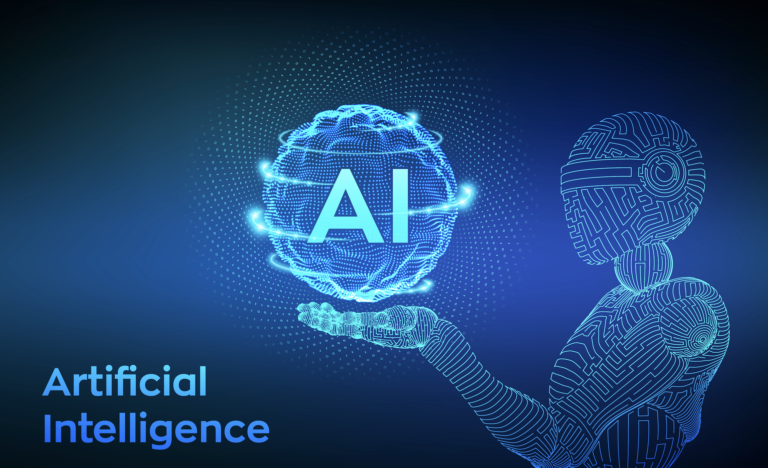
Introduction
Artificial Intelligence (AI) has emerged as a revolutionary force reshaping industries,
societies, and our daily lives. As we delve into the 21st century, the integration of AI
technologies is accelerating at an unprecedented pace, promising to unlock new possibilities
and redefine the way we live and work.
Understanding Artificial Intelligence:
At its core, Artificial Intelligence refers to the development of computer systems that can
perform tasks that typically require human intelligence. These tasks encompass a wide
range, from problem-solving and learning to speech recognition and decision-making. AI
systems are designed to analyze vast amounts of data, recognize patterns, and continuously
improve their performance over time.
Key Components of Artificial Intelligence:
Machine Learning (ML): ML is a subset of AI that focuses on developing algorithms
enabling machines to learn from data. These algorithms allow systems to improve their
performance without being explicitly programmed, making them adept at handling complex
tasks like image and speech recognition.
Natural Language Processing (NLP): NLP empowers machines to understand,
interpret, and generate human language. This facet of AI is crucial for applications like virtual
assistants and chatbots, enhancing human-machine interactions.
Computer Vision: Computer vision enables machines to interpret and make decisions
based on visual data. This technology finds applications in facial recognition, autonomous
vehicles, and medical image analysis.
Robotics: AI-driven robotics involves creating machines capable of performing physical
tasks autonomously. From manufacturing and healthcare to exploration and disaster
response, AI-powered robots are becoming integral to various industries.
Applications of Artificial Intelligence:
Healthcare: AI is transforming healthcare by enhancing diagnostics, personalizing
treatment plans, and improving patient care. Machine learning algorithms analyze medical
data to identify patterns, predict diseases, and recommend tailored therapies.
Finance: In the financial sector, AI algorithms analyze market trends, assess risks, and
optimize trading strategies. Chatbots and virtual assistants are also employed to enhance
customer service and streamline financial processes.
Education: AI is revolutionizing education through personalized learning experiences,
intelligent tutoring systems, and educational chatbots. These technologies adapt to individual
student needs, providing a more effective and engaging learning environment.
Autonomous Vehicles: The development of self-driving cars exemplifies the intersection
of AI and robotics. AI algorithms process data from sensors, cameras, and radar systems,
allowing vehicles to navigate and make decisions in real-time.
Challenges and Ethical Considerations:
While the potential benefits of AI are vast, there are challenges and ethical considerations
that demand careful consideration. Issues such as bias in algorithms, job displacement due
to automation, and the responsible use of AI in decision-making processes require ongoing
attention from policymakers, researchers, and industry leaders.
The Future of Artificial Intelligence:
The future of AI holds immense promise. Continued advancements in AI research and
technology are expected to bring about innovations that were once considered science
fiction. As AI becomes more integrated into our daily lives, it is essential to prioritize ethical
guidelines, transparency, and accountability to ensure its responsible and beneficial
deployment.
Conclusion:
Artificial Intelligence is not just a technological revolution; it is a societal transformation. Its
impact reaches into every aspect of our lives, from the way we work and communicate to
how we receive healthcare and education. By understanding the potential of AI and
navigating its challenges wisely, we can harness its power to create a future where
technology serves humanity in unprecedented ways.


 Upworks Inc partners with ABOTTS to build their Oracle Cloud Infrastructure (OCI) and migrate their custom applications to OCI.
Upworks Inc partners with ABOTTS to build their Oracle Cloud Infrastructure (OCI) and migrate their custom applications to OCI.
 QuinStreet partners with Abotts to archive and manage their IT systems on Oracle cloud (OCI).
QuinStreet partners with Abotts to archive and manage their IT systems on Oracle cloud (OCI).
 Abotts Inc Partners with Gnorth consulting to deploy exadata and ODA for a large public sector customer.
Abotts Inc Partners with Gnorth consulting to deploy exadata and ODA for a large public sector customer.
 Upworks Inc partners with ABOTTS to build their Oracle Cloud Infrastructure (OCI) and migrate their custom applications to OCI.
Upworks Inc partners with ABOTTS to build their Oracle Cloud Infrastructure (OCI) and migrate their custom applications to OCI.
 QuinStreet partners with Abotts to archive and manage their IT systems on Oracle cloud (OCI).
QuinStreet partners with Abotts to archive and manage their IT systems on Oracle cloud (OCI).
 Abotts Inc Partners with Gnorth consulting to deploy exadata and ODA for a large public sector customer.
Abotts Inc Partners with Gnorth consulting to deploy exadata and ODA for a large public sector customer.
